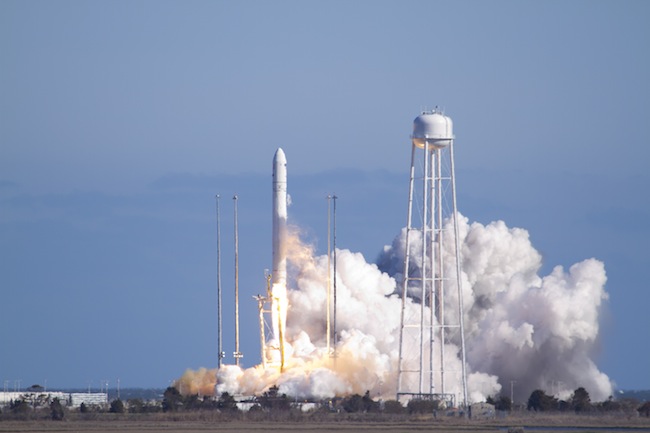SUMMARY
This is AI generated summarization, which may have errors. For context, always refer to the full article.

WASHINGTON DC, USA – Orbital Sciences, one of two private US firms chosen by NASA to shuttle cargo to the International Space Station, launched its first Antares rocket Sunday, April 21.
Liftoff of the two-stage launch vehicle — 131 feet (40 meters) tall and 12.8 feet in diameter — took place at 5:00 pm (2100 GMT) at the Wallops Flight Facility on an island off the coast of the US state of Virginia, some 170 miles (270 kilometers) from Washington DC.
As this is a test mission, Antares was not transporting the company’s Cygnus capsule but rather a simulation of an equivalent payload of 3.8 tons that was placed into orbit at an altitude of roughly 160 miles (256 kilometers) 10 minutes after takeoff.
The control room erupted in applause after the separation of the simulator payload from the rocket.
“Congratulations to Orbital Sciences and the NASA team that worked alongside them for the picture-perfect launch of the Antares rocket,” NASA Administrator Charles Bolden said in a statement.
“In addition to providing further evidence that our strategic space exploration plan is moving forward, this test also inaugurates America’s newest spaceport capable of launching to the space station, opening up additional opportunities for commercial and government users.”
With the launch a success, Virginia-based Orbital Sciences now plans a demonstration run to the space station with the Cygnus capsule in three months, followed by its first delivery mission before the end of the year.
A $1.9 billion contract requires Orbital Sciences to deliver freight to the ISS over the course of eight flights by the beginning of 2016.
Orbital Sciences said the simulated payload will stay in orbit for two weeks before being destroyed by falling back into the atmosphere. However, it specified that its Cygnus capsule could stay in orbit for up to a year.
Unlike the Dragon capsule developed by rival SpaceX, Cygnus cannot return to Earth and will be destroyed upon re-entry after its mission is complete.
SpaceX made history when Dragon became the first commercial spacecraft in history to successfully attach to the International Space Station in a May 2012 test flight.
The launch had initially been planned for Wednesday but was called off 12 minutes before the firing up of the engines due to a minor technical problem. A second attempt set for Saturday was scrapped due to strong wind. – Rappler.com
Add a comment
How does this make you feel?
There are no comments yet. Add your comment to start the conversation.